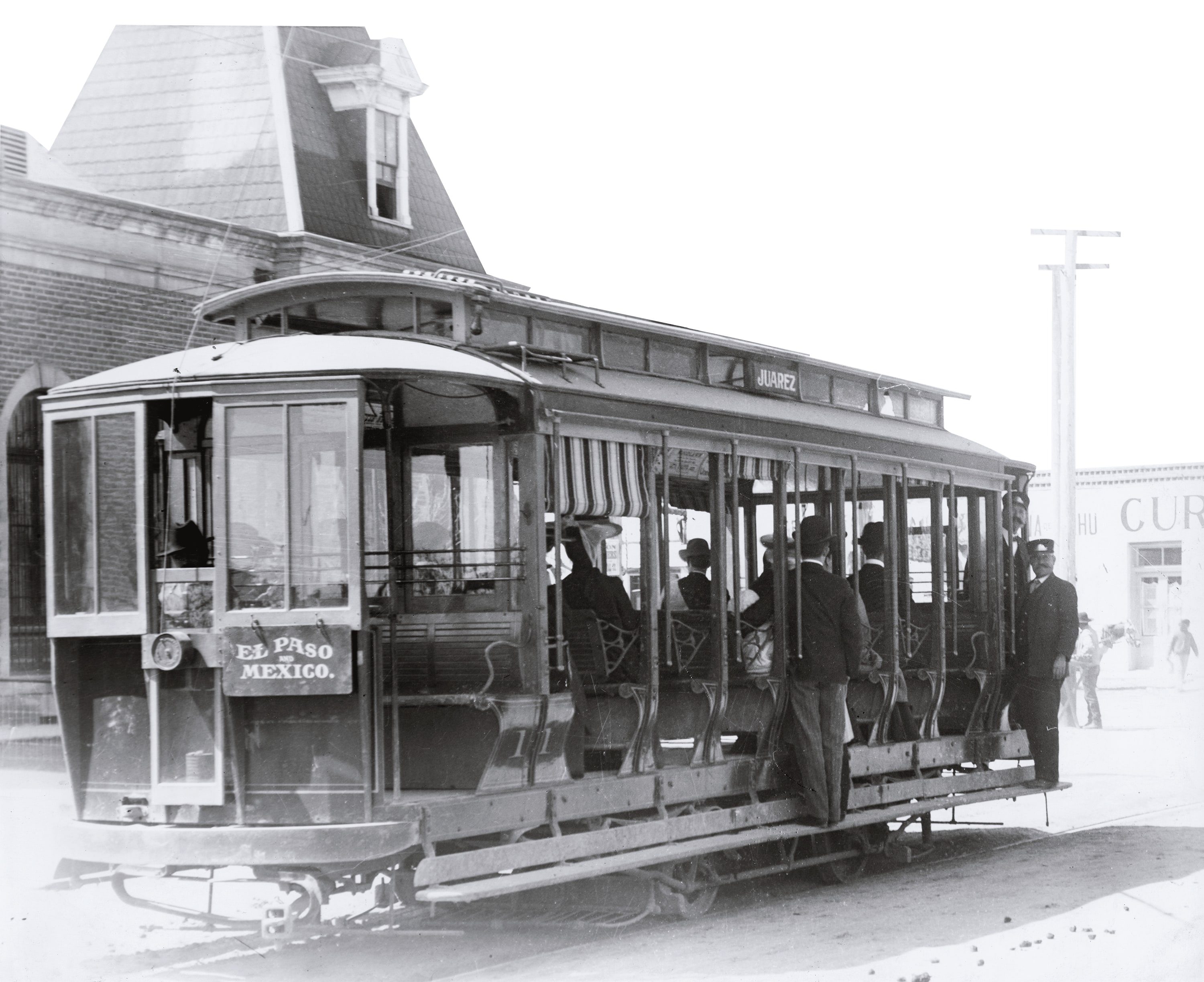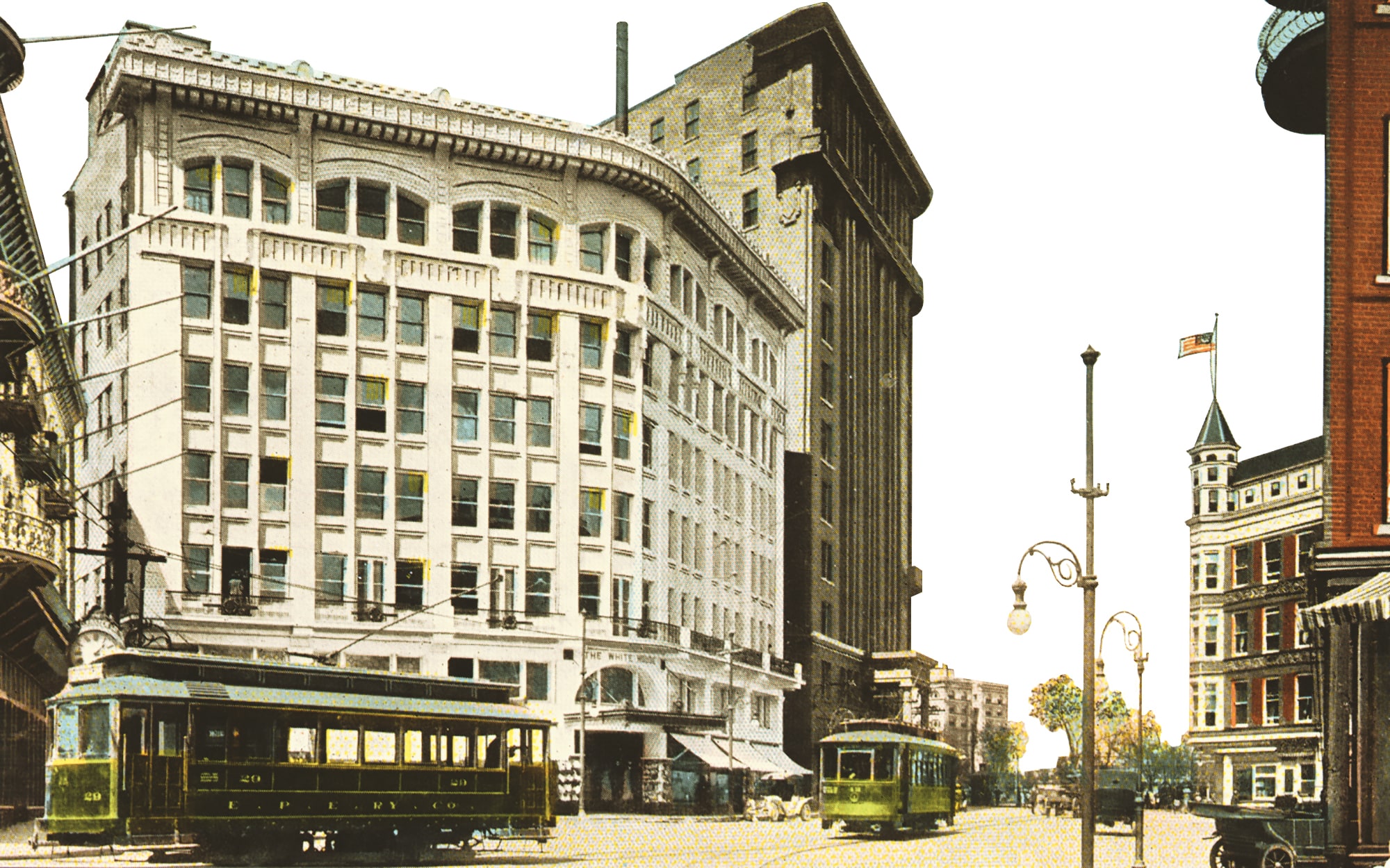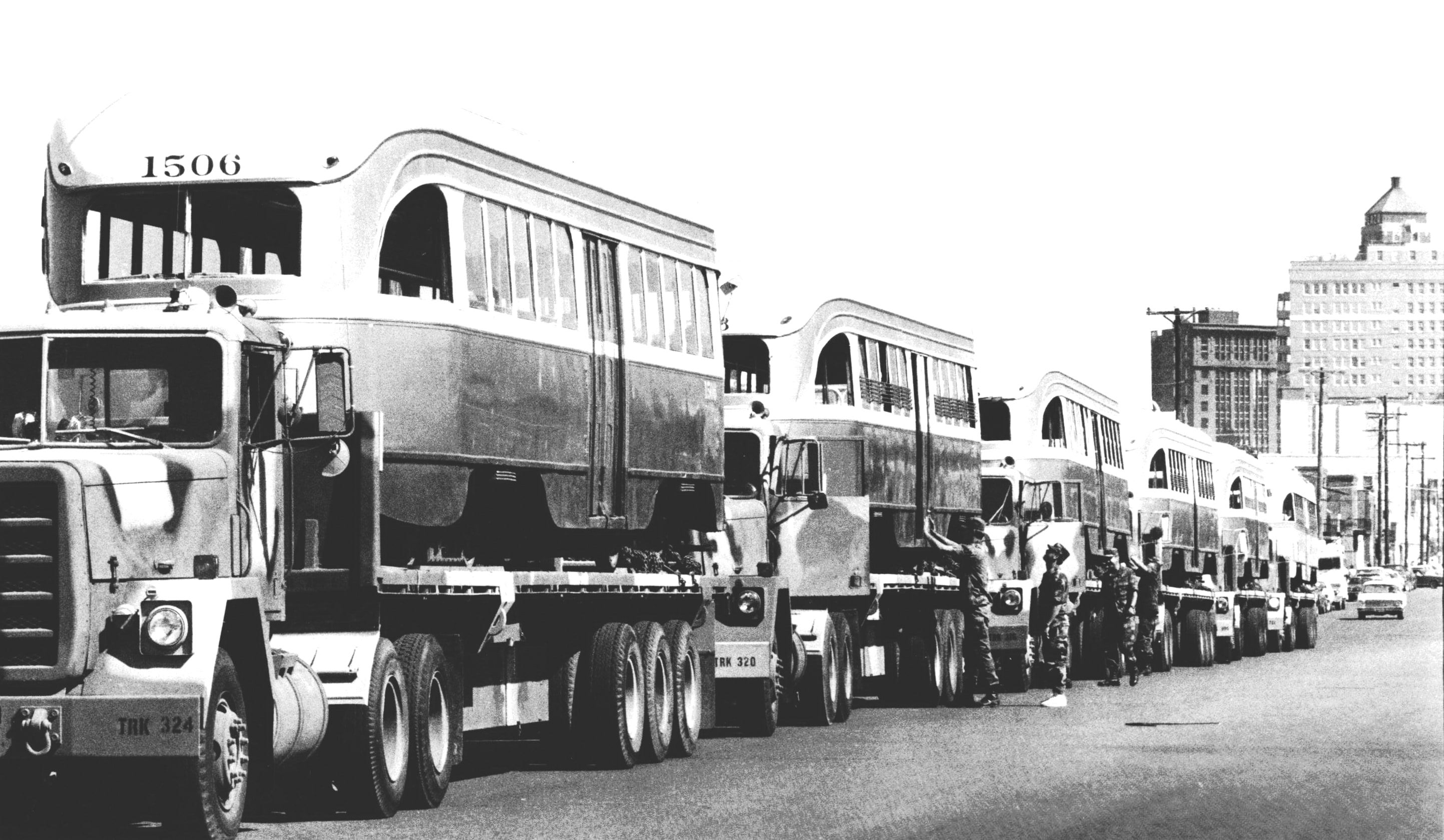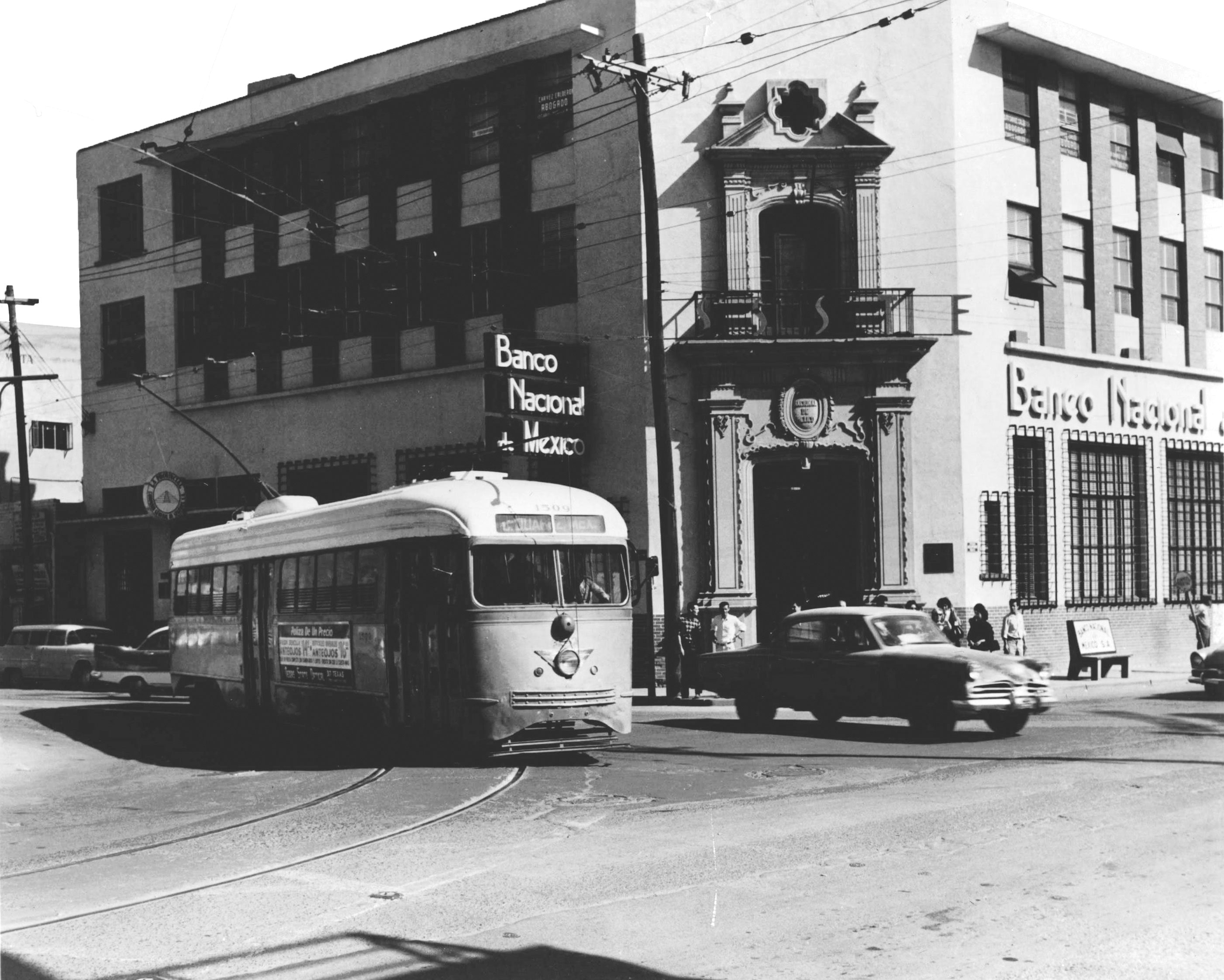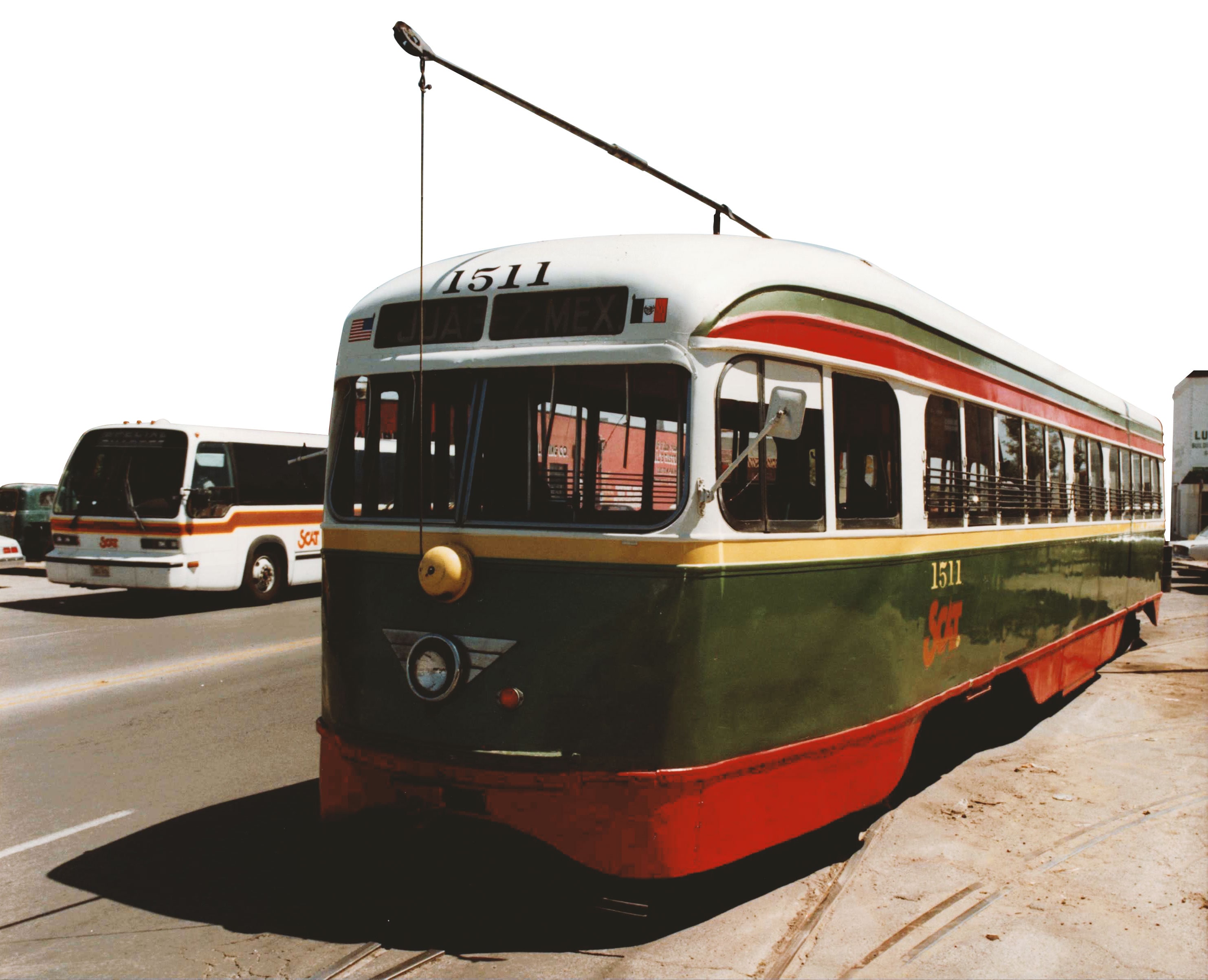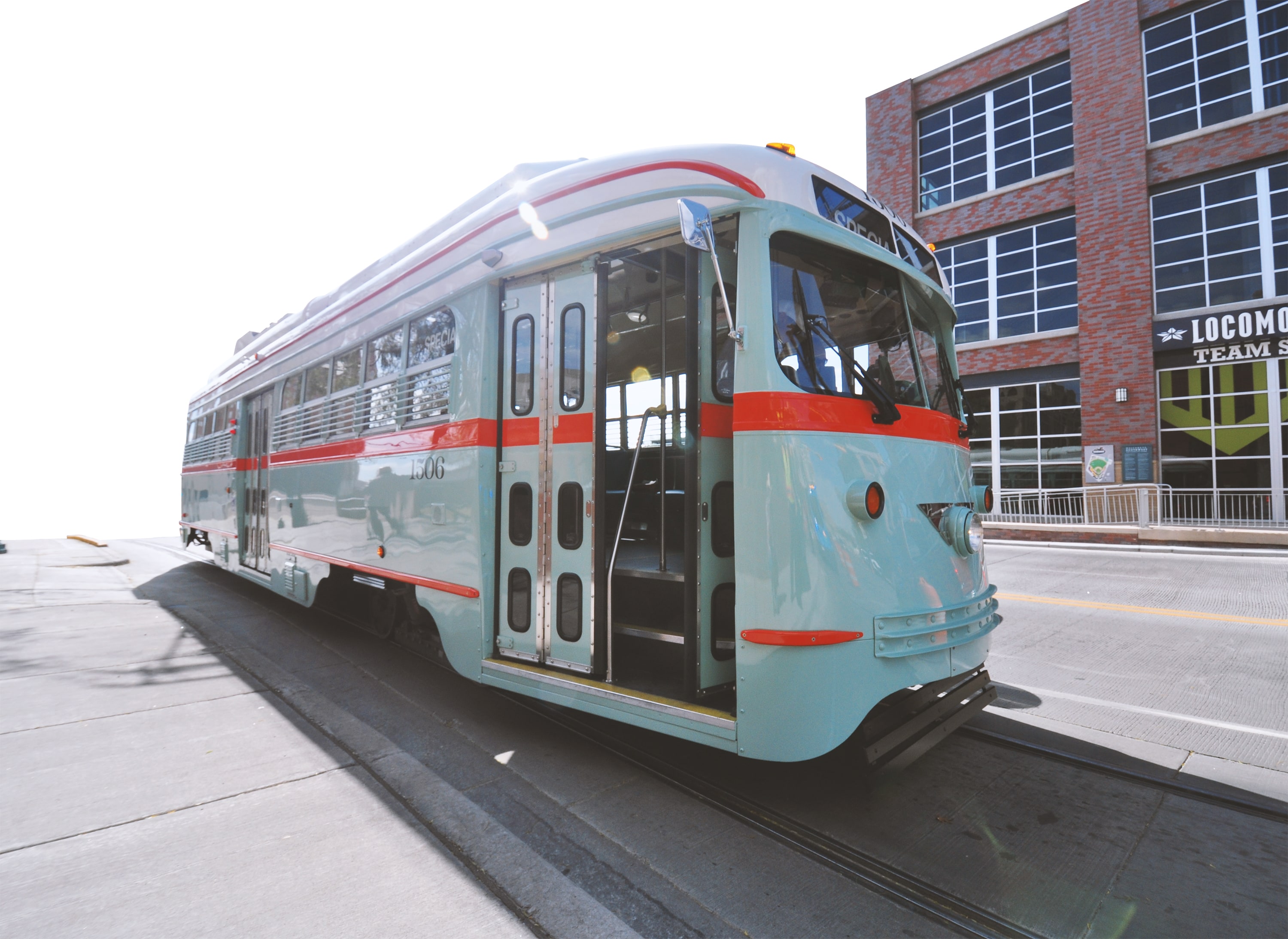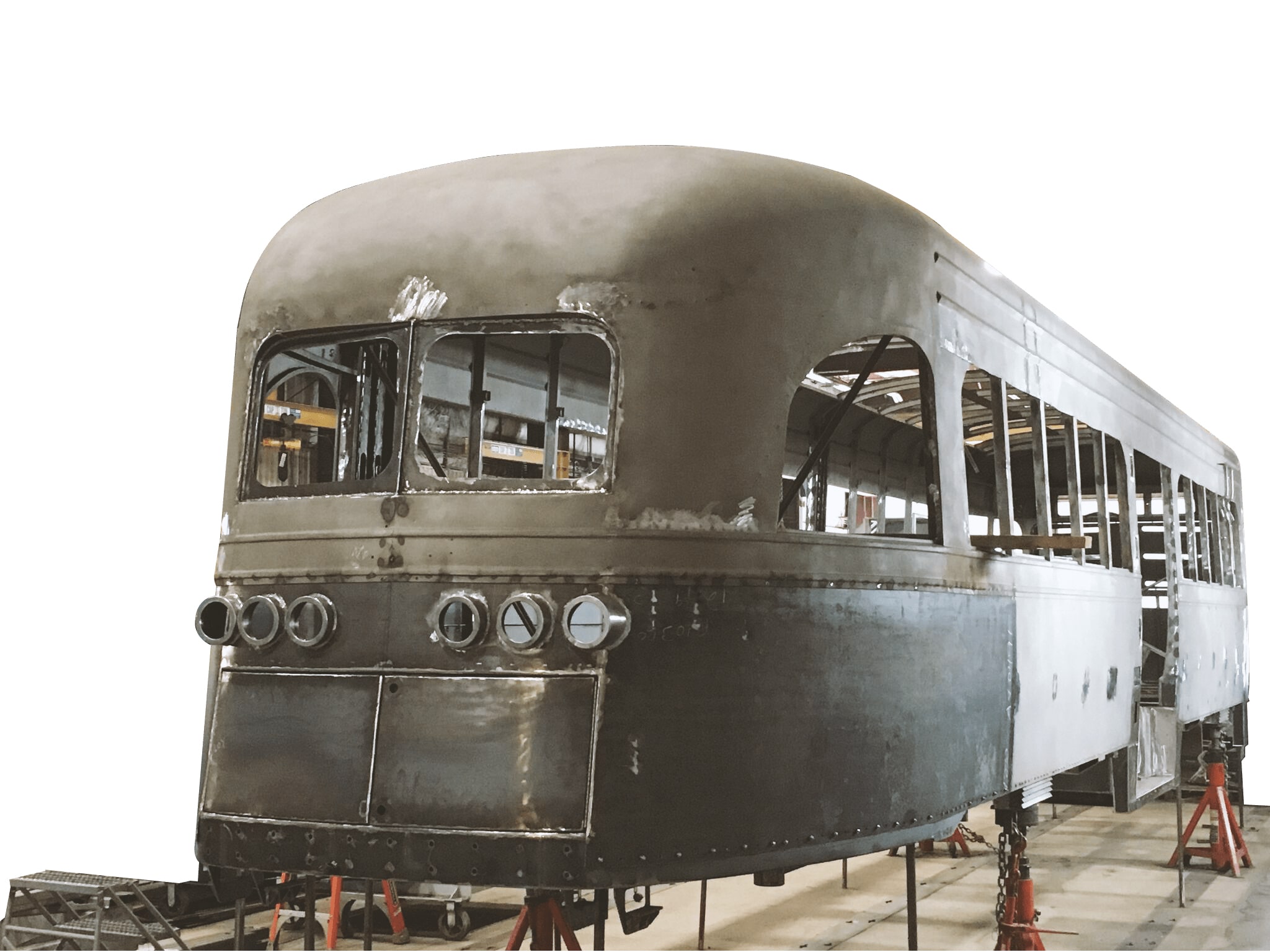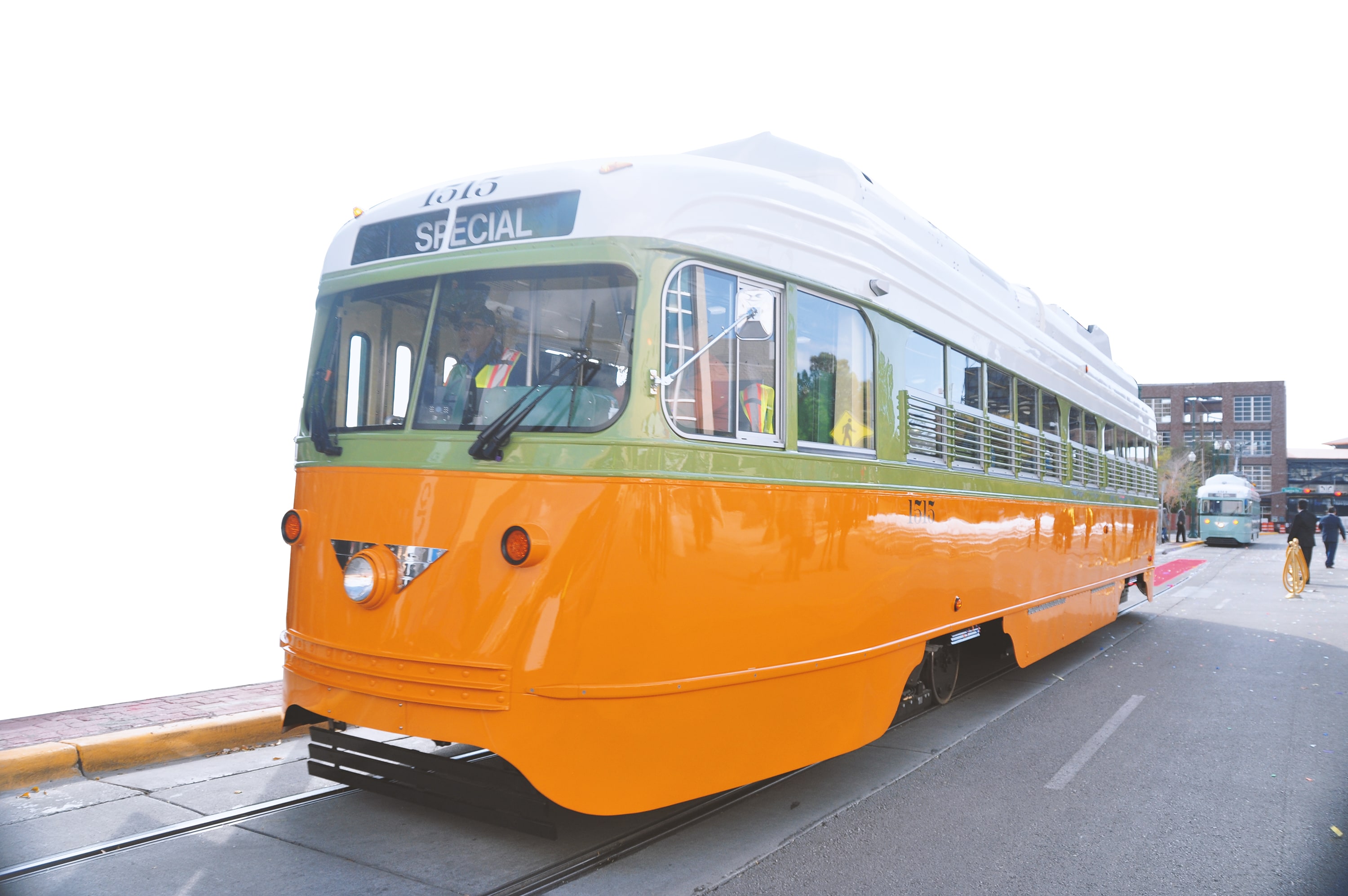Moving Forward
El Paso’s Streetcar History
First introduced in 1881, El Paso streetcars were in service for more than 90 years until service was discontinued in 1974. After decades of attempts to restart the service, the Camino Real Regional Mobility Authority was tasked with overseeing the return of streetcars to El Paso streets in 2015. The streetcars made their historic return in 2018.
Learn about the history.
Streetcar service began early in El Paso’s history, growing quickly in both service lines and popularity. The streetcars initially connected El Paso neighborhoods with Fort Bliss and provided a better way to travel across the border into Juárez.
1881
The first mule-drawn streetcars begin service in El Paso.
- The most widely-recognized mule, Mandy, is known more for her stubborn streak than her timeliness.
- Four different mule car companies operate in the Paso Del Norte Region.
- The companies built and maintain their own international bridges, charging tolls for foot and private vehicle traffic. The bridges are subject to U.S. and Mexican regulations despite being privately owned.
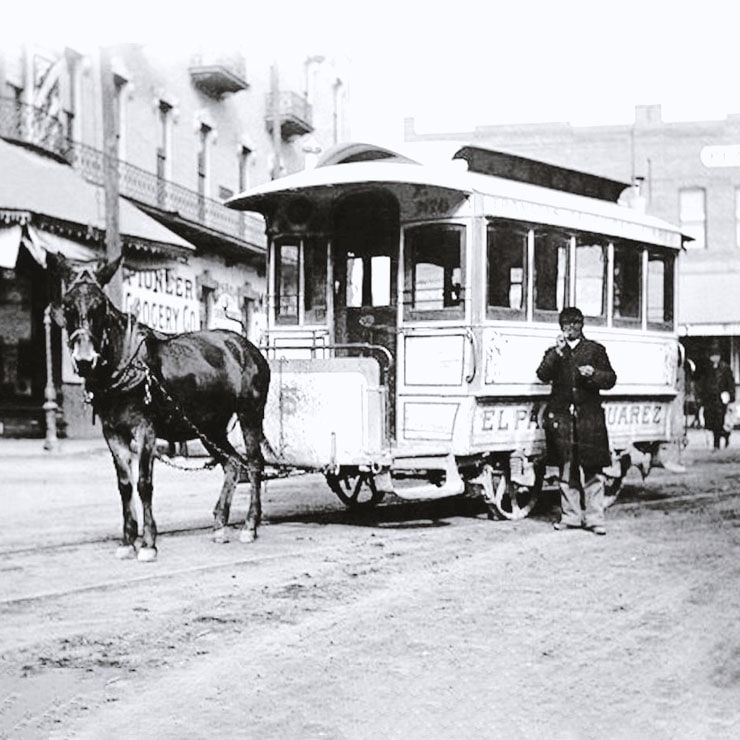
1901
After various car company consolidations and associated legal challenges are resolved, the El Paso Electric Railway Company forms and begins laying the first tracks for the new electric railway.
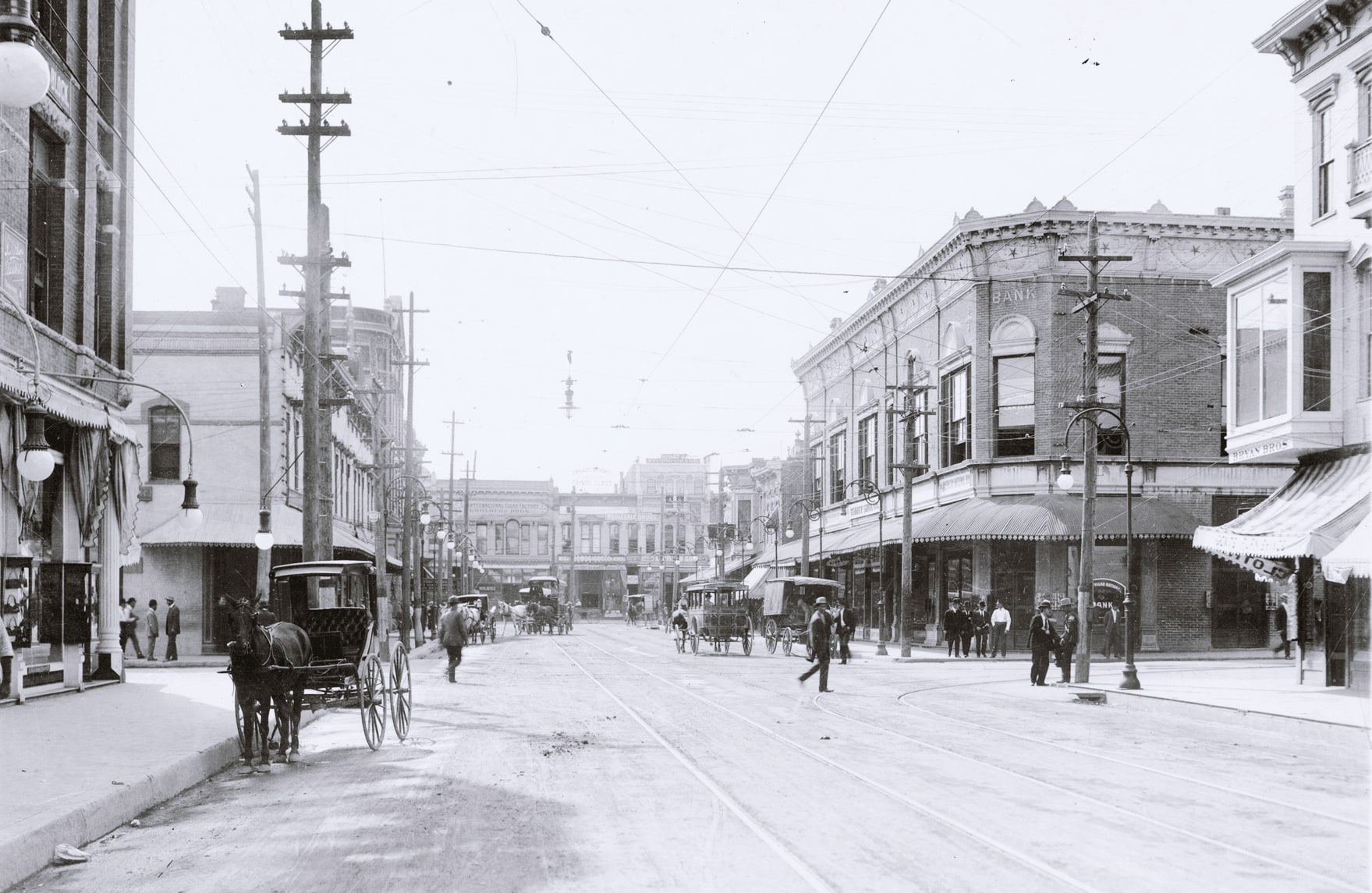
1902
The mule-drawn streetcars are replaced with electric streetcars.
- The first electric streetcar leaves for Juárez on January 11, 1902.
- Electric streetcars can carry roughly four times as many passengers as the mule-drawn cars.
- Electric streetcar operators are specially licensed. The operators transition from possessing ‘horse sense’ for mule-driving to receiving training for electric streetcar operation.
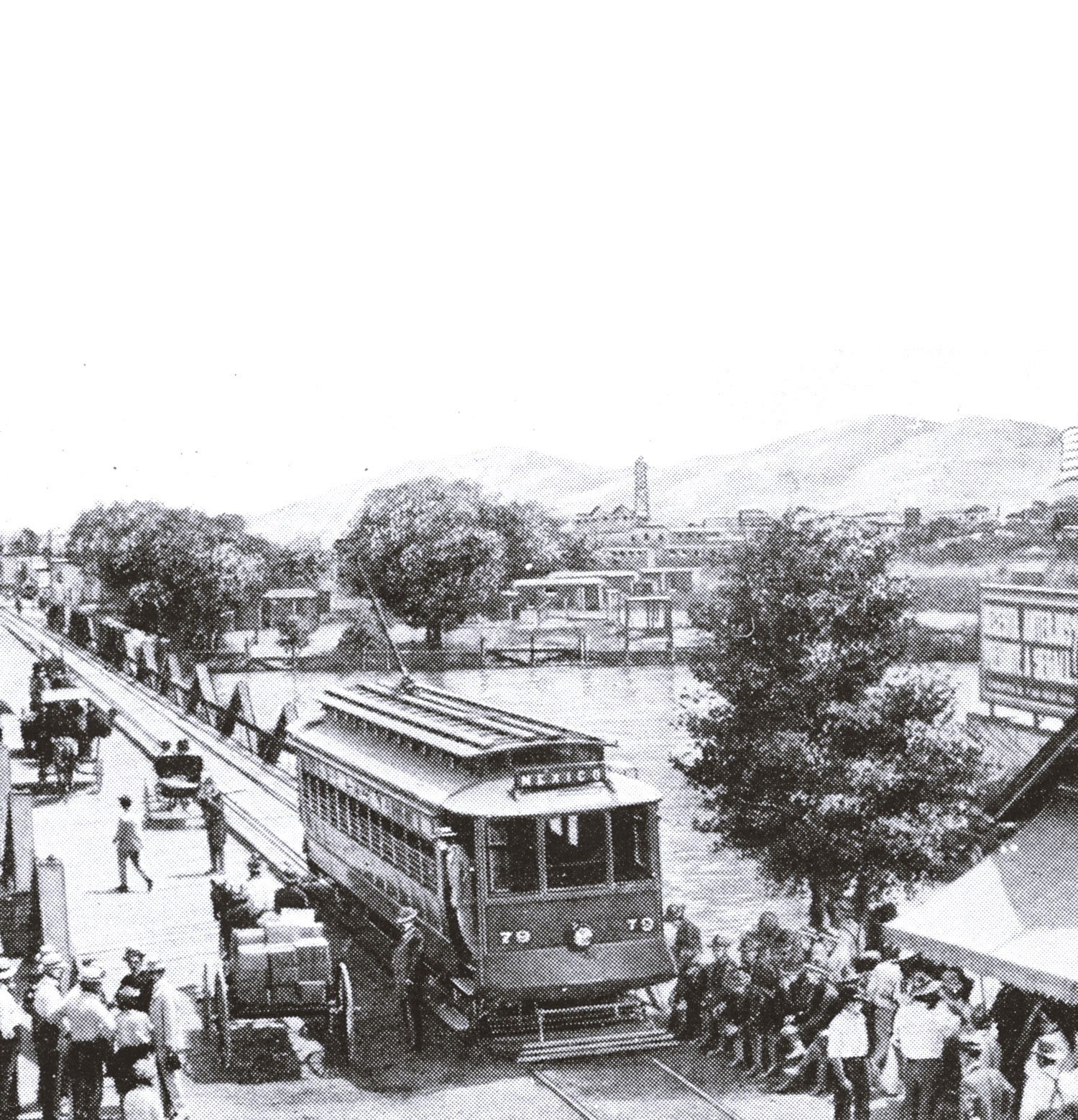
1913
The Ysleta Interurban line opens, connecting El Paso to Ysleta.

1920
The streetcar lines serve Downtown, Sunset Heights, Kern Place, Segundo Barrio, Highland Park, Morningside Heights, Fort Bliss, Government Hill, Washington Park, Ysleta and Juárez.
- Always a tourist destination because of the proximity to an ‘exotic’ foreign country, El Paso becomes even more attractive with the streetcars safely transporting passengers to Juárez for a drink during Prohibition.
- Streetcar usage peaks in 1920 with 103 cars and 64 miles of track, serving 19 million passengers.
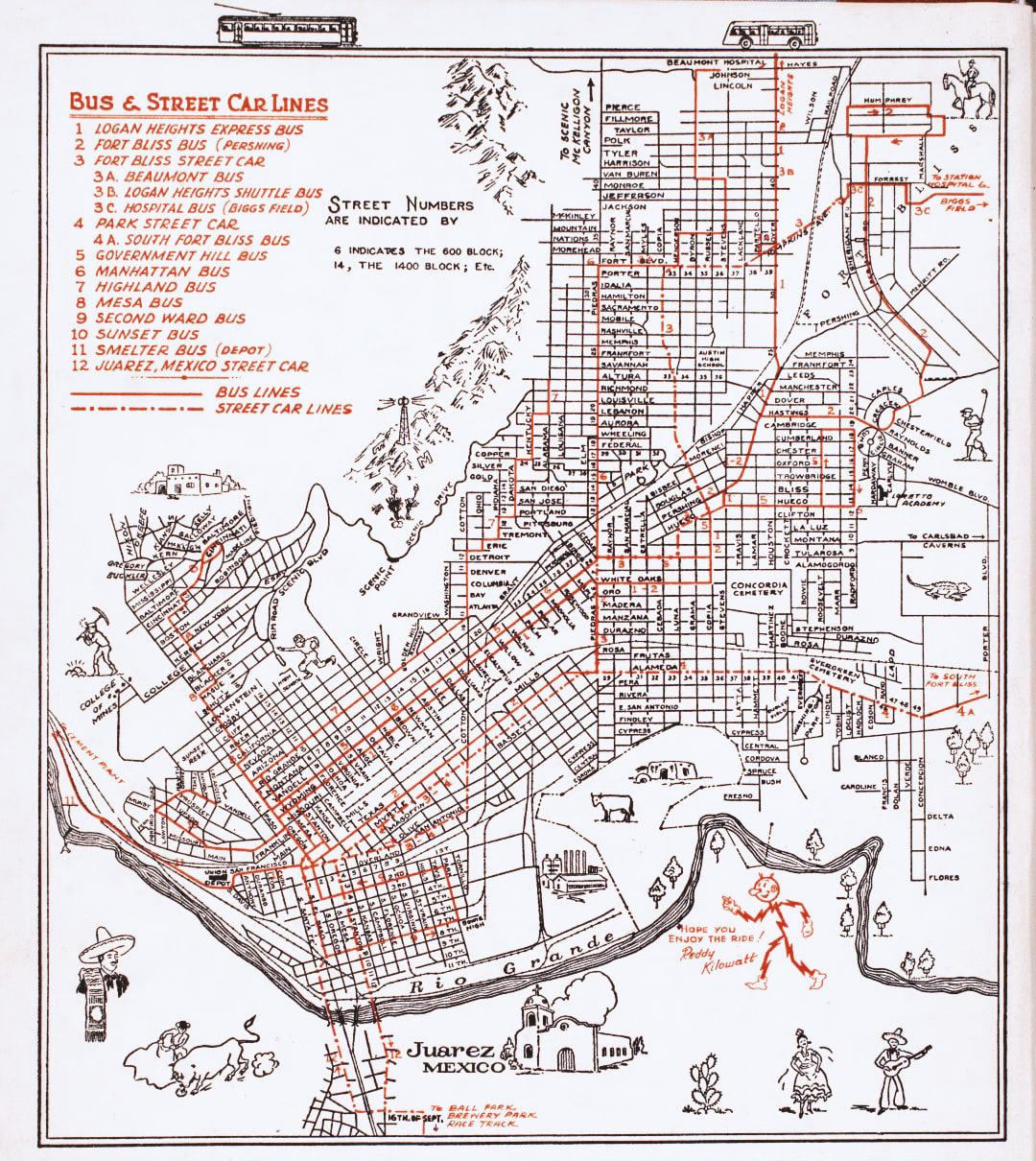
1925
The Ysleta line ends due to an increase in bus usage.
- The El Paso Electric Railway Company changes its name to the El Paso Electric Company, but retains a Transportation Division for streetcars.

1929
The Electric Railway President’s Conference Committee forms. Made up of transit leaders from across the nation, the Committee’s goal is to develop a prototype for a more modern and quiet streetcar. The result is the design of the PCC car, with its art-deco design.

1940
The only remaining lines are Fort Bliss, Highland Park and Juárez; all others have been replaced by buses.
- During WWII, abandoned streetcars are sent to scrap drives and bus ridership increases due to gas rationing. Women drivers handle a number of the bus and streetcar routes.

1943
The El Paso Electric Company sells its Transportation Division to American City Lines, which is a subsidiary of National City Lines, a holding company for GM and Standard Oil. National City Lines, operating in El Paso as El Paso City Lines, ends all streetcar routes, except for one: the El Paso/Juárez line.

El Paso City Lines purchased a number of PCCs, which were built in 1937, from the City of San Diego. Across the country, streetcar systems were being replaced by buses and personal vehicle usage.
1950
The first 17 PCC cars arrive from San Diego.
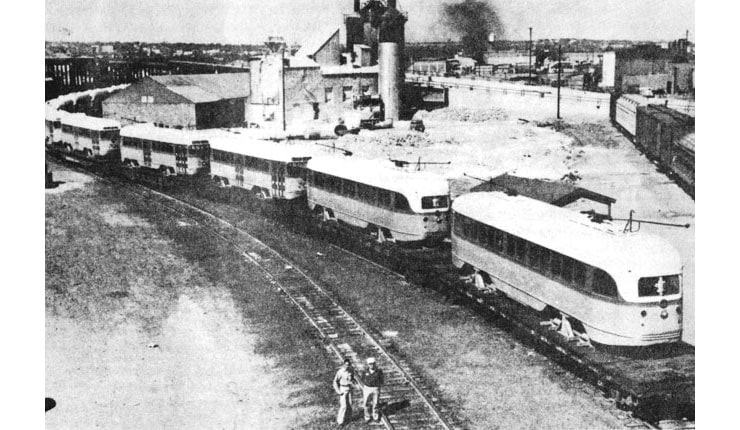
Three additional PCC cars, also purchased from San Diego, are brought to El Paso, increasing the PCC fleet total to 20.
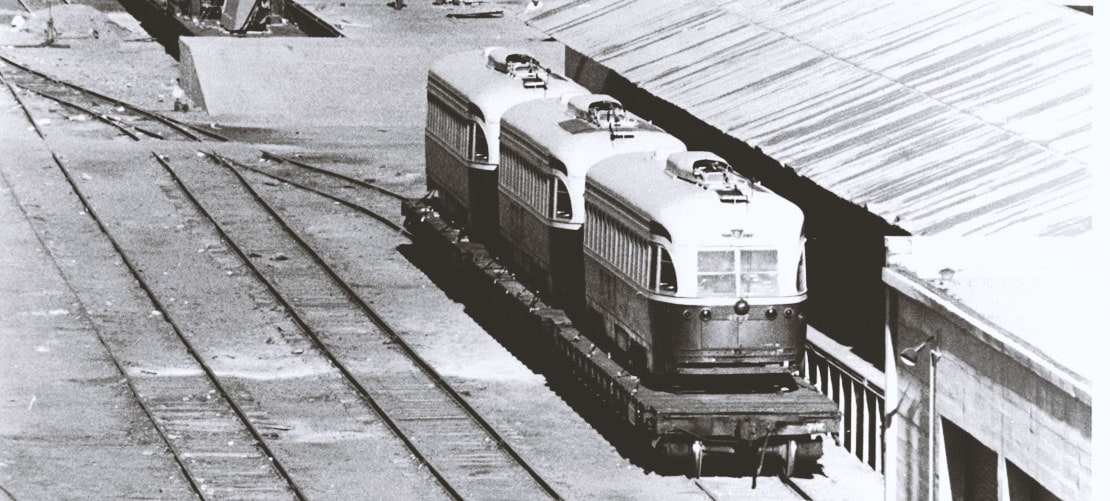
1967
After a temporary suspension of service into Juárez due to reconstruction of the area’s international bridges, the streetcar service resumes. During construction, buses were used to replicate the streetcar service.

1973
Employees of El Paso City Lines begin a strike that includes blockage of PCC #1516 at the base of the Santa Fe Street Bridge while returning from Juárez on July 31. Service never resumes, marking the end of international streetcar service between El Paso and Juárez.

1974
The strike is resolved and local streetcar service resumes, but it’s short-lived and streetcar service in El Paso officially ends.

A number of studies and research initiatives are conducted over the years to assess the feasibility of returning the streetcars to El Paso. None result in a commitment to reinstating the streetcars until the final study in 2010. Below are some of the initiatives that were launched in order to reinstate service in El Paso.
1976
The City of El Paso submits a proposal to the U.S. Urban Mass Transportation Administration to construct a downtown people mover for El Paso and Juárez. El Paso is not selected for the project.

1979
Officials from Pan Am Savings present El Paso City Mayor Westfall with a $4,000 check to support a feasibility study to restart the streetcar service. As part of the presentation, Pan Am and City officials are pulled in two PCCs from the Cotton Street maintenance facility to the Toltec Building.
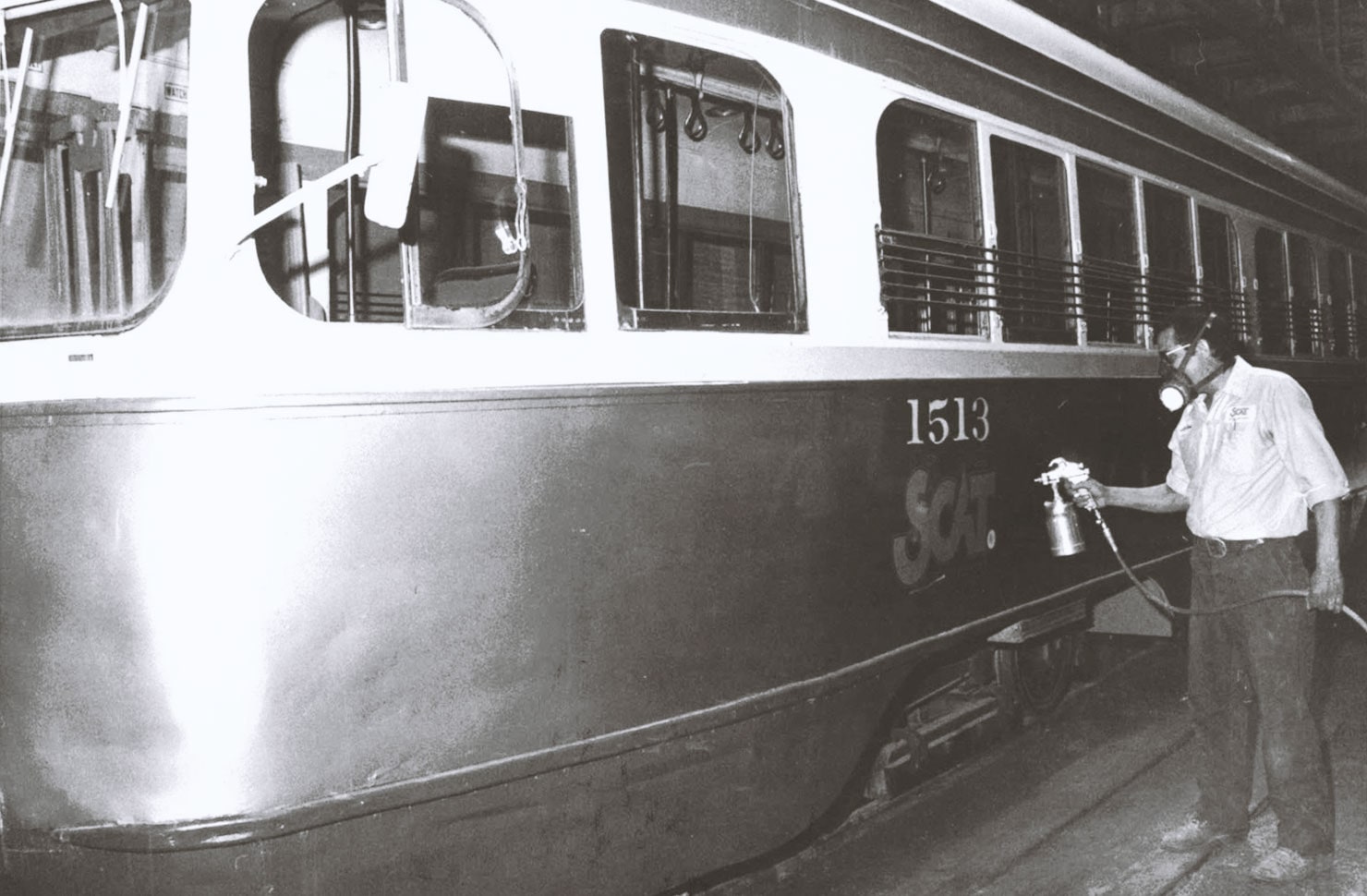
1981
Bernard Johnson Inc. submits a study for a $7.8 million, 2.2-mile streetcar system for the Downtown area. The streetcar would serve the border crossings, without crossing into Juárez.

1988
The City’s Urban Design Division of the Planning Department completes a “Marketing and Feasibility Analysis for an International Transport System in El Paso and Ciudad Juárez Central Business District.” The analysis determines that “El Rapido International Trolley System” – a bi-national trolley concept that was part of the Paseo de las Luces Binational Planning Project from 1987 – is viable and that market demand will support future expansion. The study also notes that the market demand is strong enough for an El Paso only route, if complications were to arise with implementation of international service.
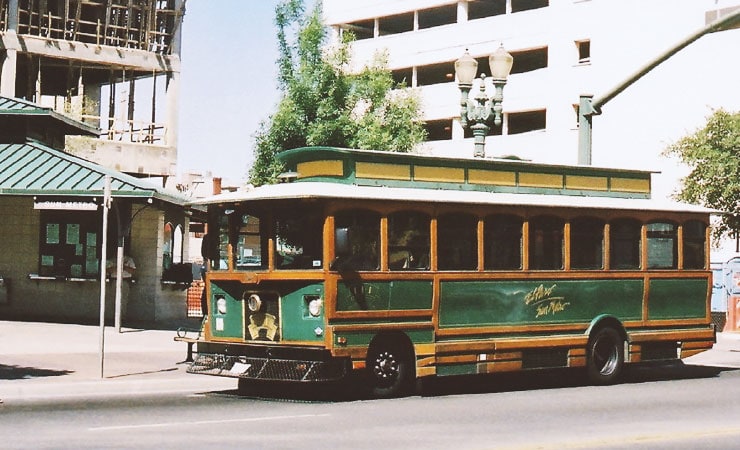
1993
Kimley-Horn and Associates prepares a study recommending a 0.64-mile line connecting San Jacinto Plaza and Oregon Street, with a projected ridership of 6,000 passengers a day.

1994
Kimley-Horn prepares a follow-up report to answer City Council questions and evaluate various streetcar technologies. The report recommends refurbishing the existing streetcars, in part to celebrate the historical significance of the Paso Del Norte region.
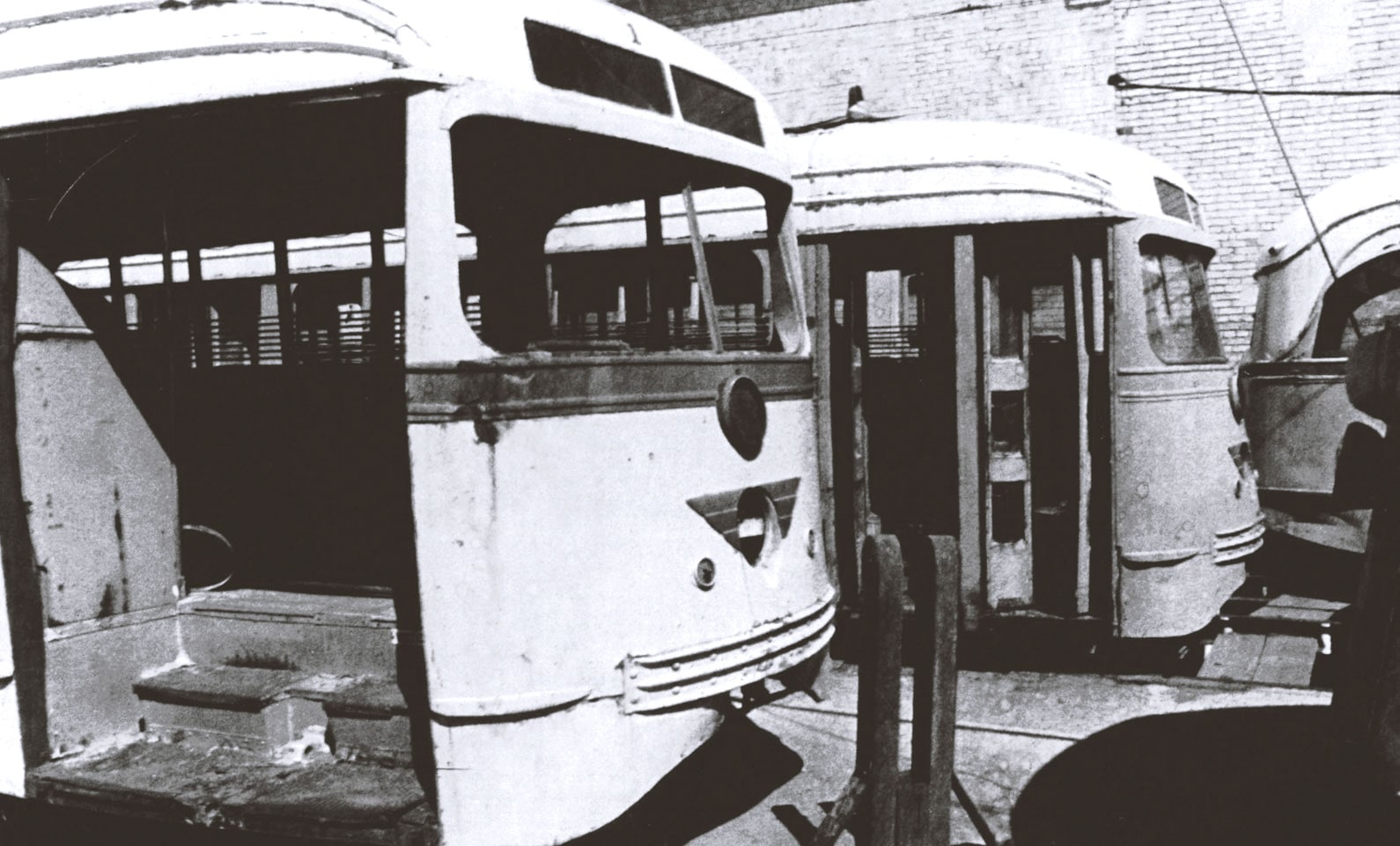
1995
A two-phase streetcar revitalization study is conducted by the City. A double-tracked, 0.64-mile streetcar route is recommended and $13.5 million is budgeted to restart the streetcars connecting the Plaza to the Santa Fe Bridge. This route, however, never went into effect.

2004
The Goodman Corporation prepares a report as part of a mobility needs assessment that includes the development of a light rail system.

2008
Jacobs Carter Burgess submits a study similar to the Bernard Johnson feasibility study. The “El Paso Historic Trolley Streetcar Initiative” is presented to the City of El Paso and Sun Metro. The study proposes a 2.13-mile loop serving the international bridges, San Jacinto Plaza, the Civic Center Complex and Union Depot. The study estimates the rail installation and infrastructure improvements to be $24.6 million, and the rehabilitation for 9 PCC cars to be $40.4 million.

2010
Cambridge Systematics, as a consultant to TxDOT, is tasked with development of a major transportation study for the El Paso ports of entry. A rail feasibility study researching the reintroduction of the streetcars to El Paso, which was completed by HNTB, is included in the study. The “Rail Transit Study” identifies four possible downtown/port of entry routes, and includes engineering feasibility, market demand, economic benefits and project constraints.

After years of studies and research, the City of El Paso embarked on an ambitious plan to renovate the PCC cars and reintroduce the Streetcars in El Paso.
2012
As part of an initiative led by City Representative Steve Ortega, the El Paso City Council uses the 2010 Rail Transit Study to engage the URS Corporation, which begins work on the environmental and engineering services needed to restart the streetcar service. This effort marks a definitive shift from study to implementation.

2014
Under the leadership of Ted Houghton, then-chairman of the Texas Transportation Commission, TxDOT approves $97 million in construction funding for the streetcar restoration and implementation. Because of its ability to manage non-traditional transportation projects, the funding is awarded to the Camino Real Regional Mobility Authority (CRRMA). The City assigns its environmental and engineering work to the CRRMA for use in the CRRMA’s management of the construction of infrastructure and rehabilitation of the vehicles.

2015
The CRRMA contracts with Paso del Norte Trackworks to complete the infrastructure necessary to reintroduce streetcar service to El Paso. Infrastructure components include the placement of 4.8 miles of track, installation of five separate power substations, construction of a maintenance and storage facility, placement of over 400 overhead contact system (OCS) poles and stringing of OCS wire to power the vehicles.
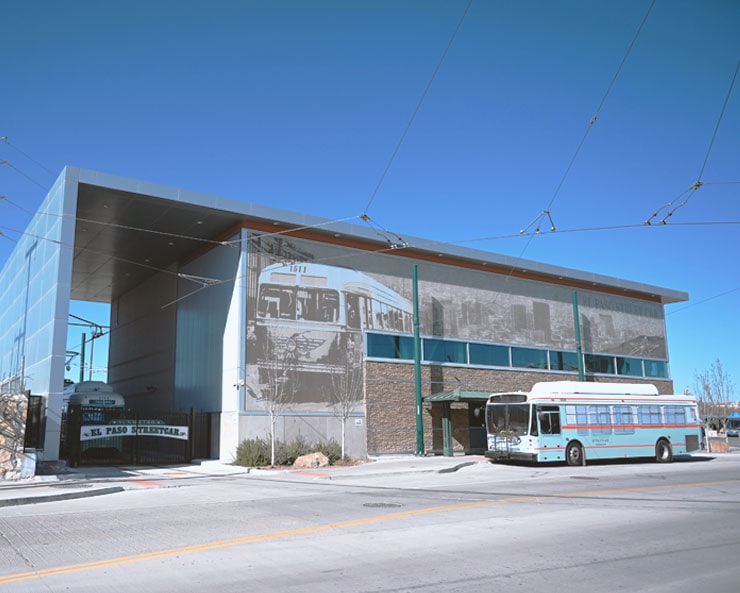
2015
The CRRMA contracts with the Brookville Equipment Corporation to renovate several of the PCC cars. After spending forty years in the El Paso desert, six of the City’s remaining nine PCC cars are sent to Pennsylvania for rehabilitation. Vehicle rehabilitation includes stripping the cars down to the bare frames and rebuilding with modern amenities and safety features, all the while maintaining the cars’ historic feel. Among other vehicle components, the frames, trucks, traction motors, and dash components are rebuilt or replaced.
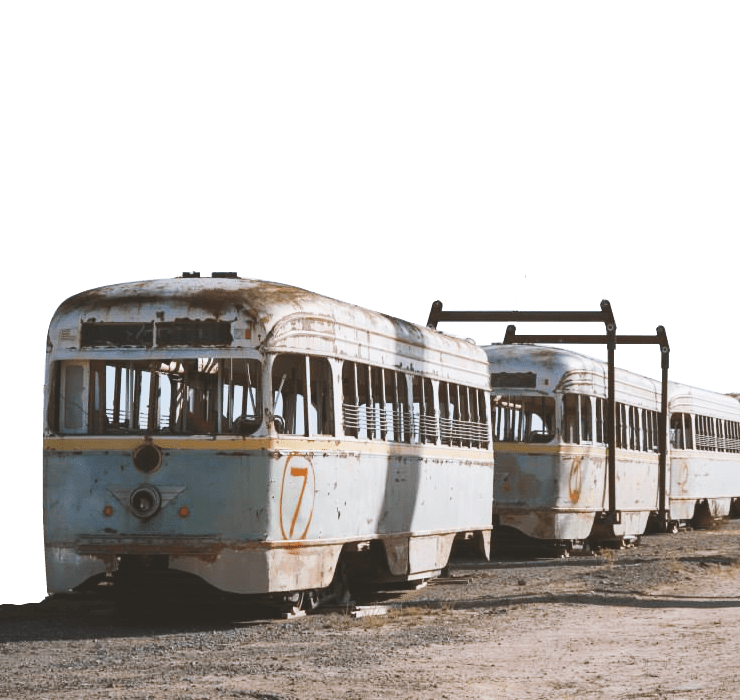
2016
In April, the first shipment of steel girder rail, on which El Paso’s streetcars will run, arrives in the Sun City in from Austria. Each length of rail is 59 feet long and weighs approximately 2,300 pounds. About 900 pieces are used throughout the entire project.
- The first rail is laid in May, along Oregon Street near the University of Texas at El Paso.
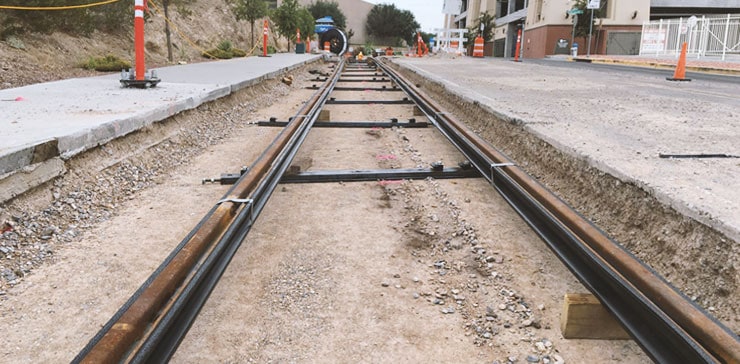
2017
Rail work continues along the streetcar route through August. Utility relocations, street reconstruction and laying the concrete track slab all become a fact of life for El Pasoans from the Southside to Downtown to Kern Place.
- Thousands of El Pasoans sign the final piece of steel rail in August, before being placed in the street and welded into place, completing the 4.8-mile figure-eight route.
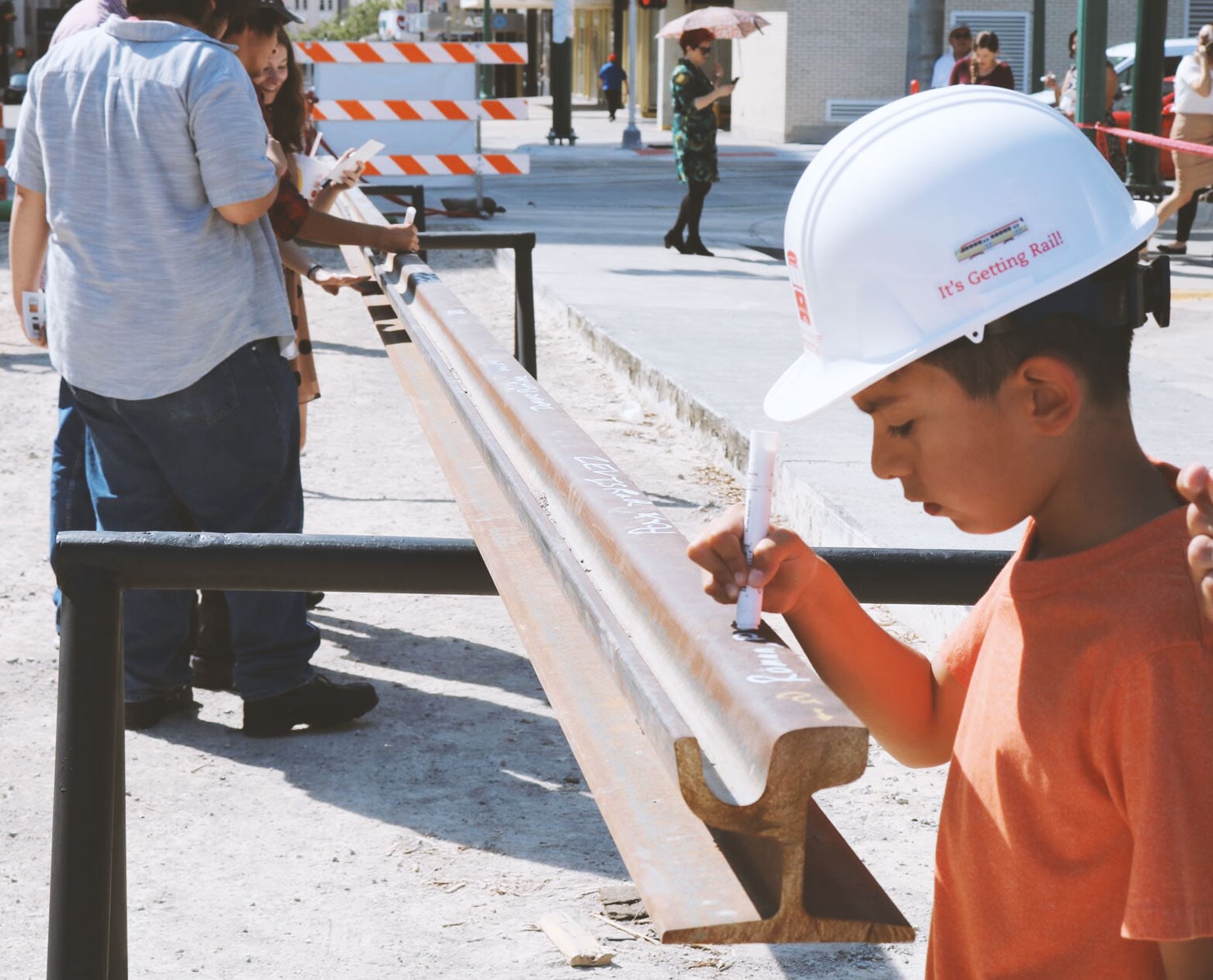
2018
The Maintenance and Storage Facility (MSF) is completed and the CRRMA turns control of it over to the City of El Paso’s Mass Transit Department (Sun Metro). The MSF will serve as the home base for streetcar operations, where each vehicle will leave to begin its daily service and return at the end of its run. The CRRMA also turns over the two major project components (infrastructure and systems) to the City in October.
-
PCC No. 1506 arrives in March.
PCC No. 1512 arrives in April.
PCC No. 1504 arrives in June.
PCC No. 1514 arrives in July.
PCC No. 1515 arrives in October.
PCC No. 1511 arrives in November.
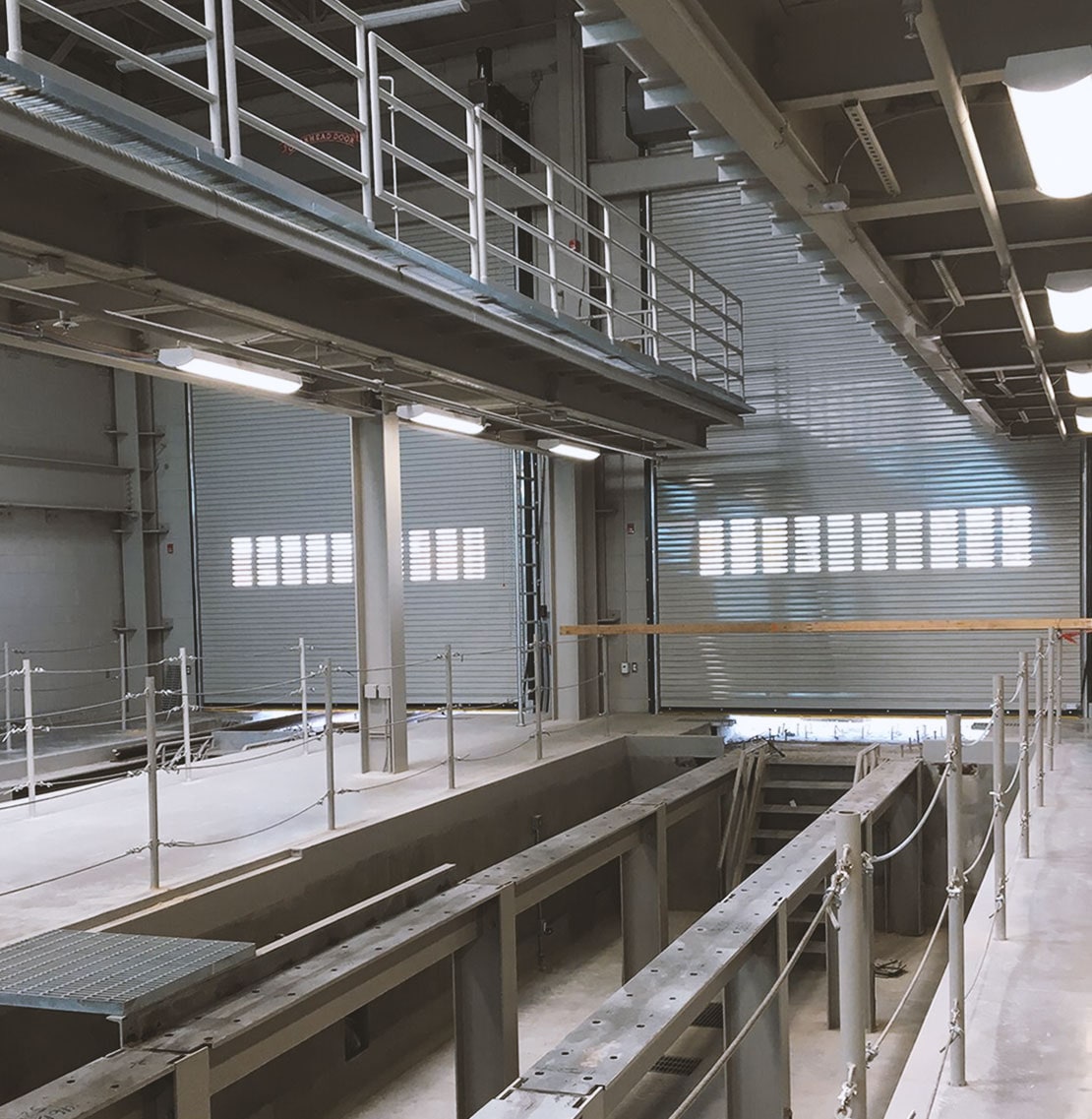
2018
Construction activities on the El Paso Streetcar Project are complete and electric streetcar service, using fully refurbished PCCs, officially resumes in El Paso.
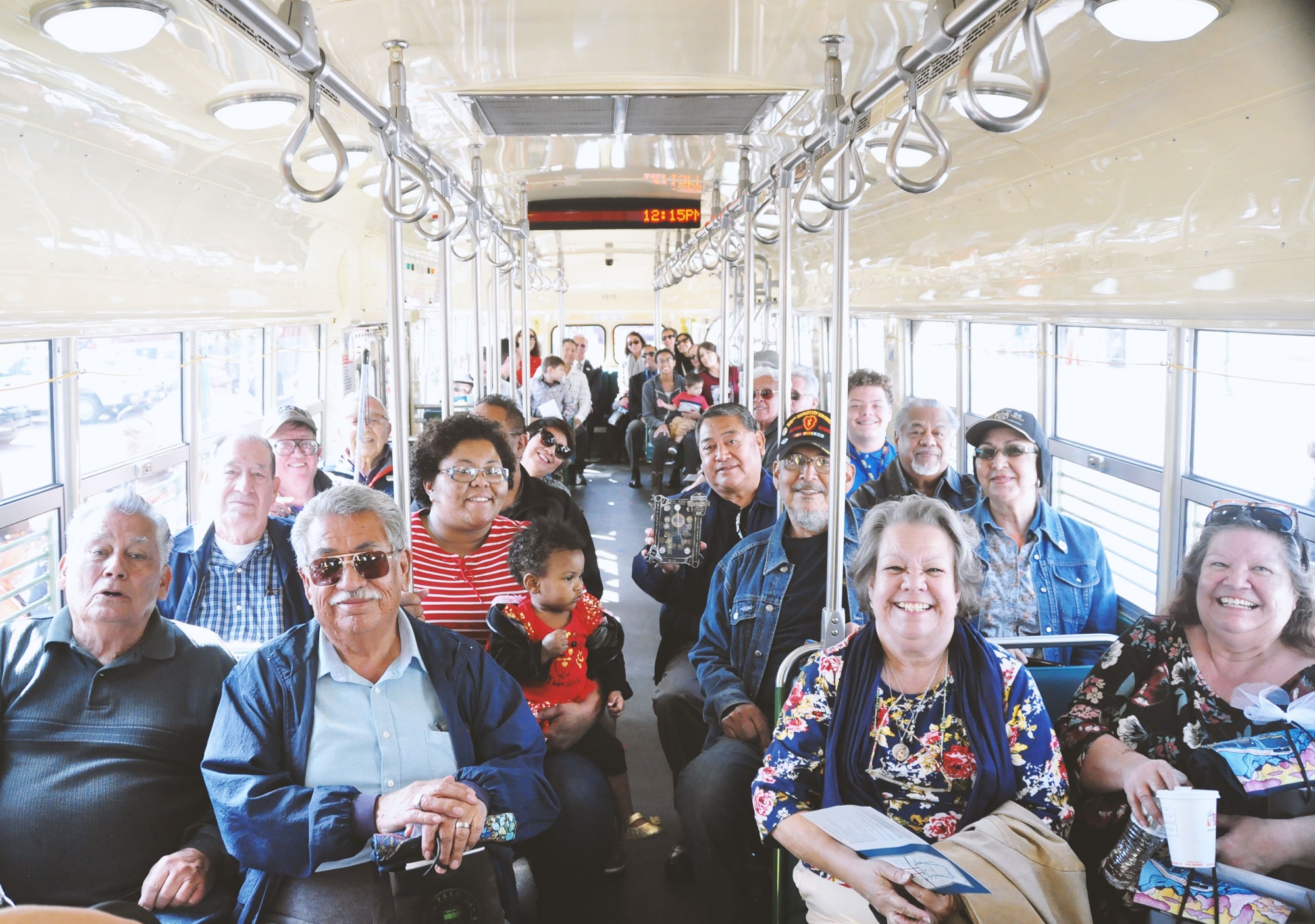


The intent of the rehabilitation was to retain the look and feel of the historic vehicles, while incorporating the modern conveniences of today’s transit systems. The car bodies are 80 years old, but the interiors include a number of modern features.



PCC No. 1511 has a different seating arrangement than the rest – perimeter seating, which is reminiscent of the streetcars that went to Juárez.


Historical images provided in part by the Special Collections Department of the University of Texas at El Paso Library and the Border Heritage Center of the El Paso Public Library. Modern images provided by Barracuda Public Relations and Sun Metro.


